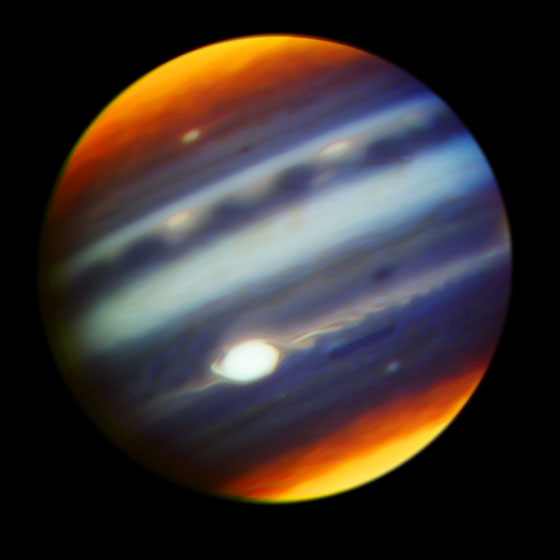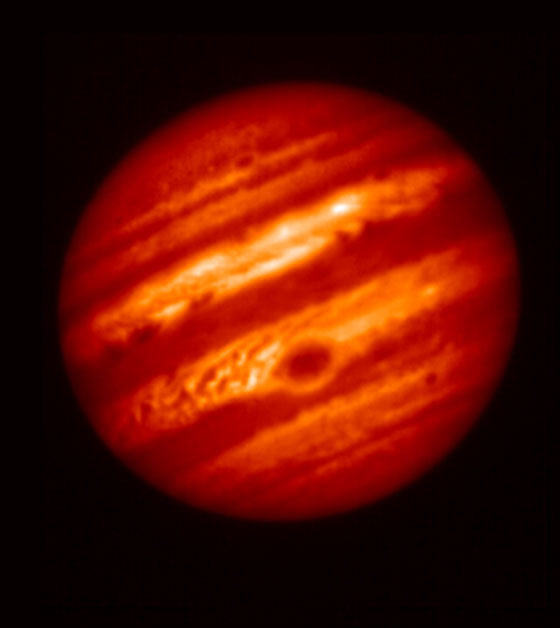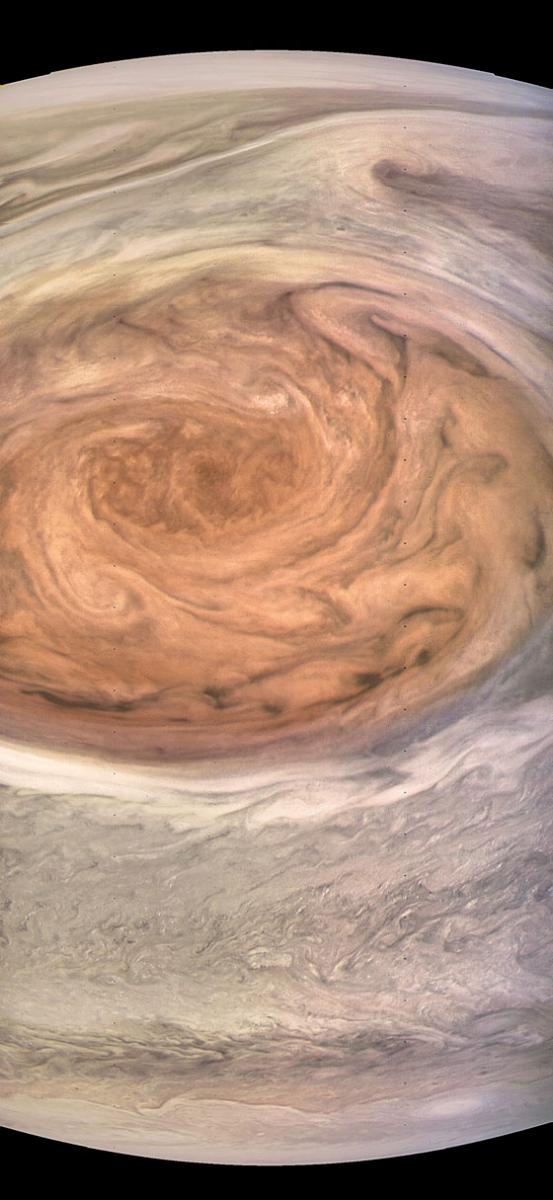Stunning images of Jupiter from Juno.

Jupiter’s Great Red Spot is a continuous area of high pressure, such as a storm or a hurricane, but even bigger. Winds can be as high as 270 miles an hour. The Great Red Spot has been tracked since 1830, but it’s possible that it has existed for as long 350 years, or even longer.
On July 10, 2017, NASA’s Juno spacecraft, which was launched in 2011 and has been in orbit around Jupiter since July 2016, completed a flyby of the Great Red Spot and is streaming images and data back to Earth.
Juno’s next close flyby of Jupiter will be on September 1, 2017.

This composite, false-color infrared image of Jupiter reveals haze particles over a range of altitudes, as seen in reflected sunlight. It was taken using the Gemini North telescope in Hawaii on May 18, 2017, in collaboration with observations of Jupiter by NASA's Juno mission. Credits: Gemini Observatory/AURA/NSF/NASA/JPL-Caltech Full image and caption

This false-color image of Jupiter was taken on May 18, 2017, with the Subaru Telescope in Hawaii, using a mid-infrared filter centered at a wavelength of 8.8 microns. The Great Red Spot appears at the lower center of the planet as a cold region with a thick cloud layer. Credits: NAOJ/NASA/JPL-Caltech Full image and caption

More coming from Juno! Jupiter's Great Red Spot - Juno Perijove 7. Credit data: NASA. Image processing: Kevin Gill. Full image and caption





